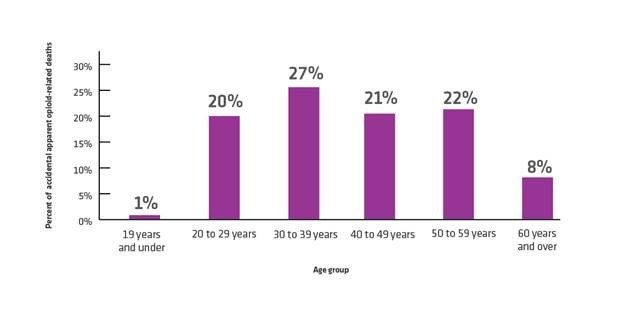Prepared by Richard Dowson
This Project is not pejorative. The information is general and intended to help understand Deaths from Accidental Apparent Opioid Toxicity, also called Unregulated Drug Overdoses.
2023 Saskatchewan – Unregulated Drug Overdose Deaths
291 Saskatchewan humans died from Unregulated Drug Overdoses (Accidental Apparent Opioid Toxicity) between January and June, 2023.
The projection suggests 582 Saskatchewan humans will die from Unregulated Drug Overdoses in 2023. A rate of 60 per 100,000 or an average of 48.5 each month or 1.6 per day.
Probably over 80% are Fentanyl related deaths.
Comparison: Saskatchewan Vehicle Accident Deaths to Overdoses
In 2021 Saskatchewan motor vehicle accidents resulted in 87 Death
Unregulated Drug overdoses deaths are 6.7 time higher than deaths in vehicle accidents.
Hospitalization from Unregulated Drug Overdoses in 2022
Highest rate of hospitalization is in British Columbia, Alberta, and Saskatchewan.
Median total length of hospital stay from drug overdose is three days. (Canadian Government figures)
Average hospitalization cost per day in a Saskatchewan is $1381.00. (3 days = $4143.00)
Provinces with the Highest Rate of Deaths
British Columbia, Alberta and Ontario have the highest death rates but the rates are on the rise in Saskatchewan and the Yukon.
What is Fentanyl and why is it so deadly?
According to the RCMP website; “2 milligrams of pure fentanyl (the size of about 4 grains of salt) is enough to kill the average adult.”
SEE: What is fentanyl? | Royal Canadian Mounted Police (rcmp-grc.gc.ca)
Fentanyl is 100 time more toxic than Morphine. Fentanyl is mixed with other drugs to give them a bigger ‘high’. Since it is odourless and tasteless people don’t know they are taking it.
Fentanyl is often combined with oxycodone and heroin and even non-opioids like cocaine. It is highly addictive.
Death by Fentanyl
Death usually results from a slowing of the respiratory system to the point where the person stops breathing.
Comparisons with Other Provinces
The amount of Saskatchewan Data is limited, therefore, information from other provinces is included. When adjusted for population the Data are similar. For example, Alberta has 4 times the population of Saskatchewan so deaths will be 4 times those of Saskatchewan – and they are.
Demographics – Who’s Overdosing? Where Are People Overdosing?
News suggests the deaths are among ‘Street People’. WRONG!
Only about 20% of overdoes happen ‘on the street’ among ‘street junkies’.
Confused? Consider alcoholism. Most Alcoholics do NOT end up on Skid Row.
Alberta Unregulated Drug Overdose Deaths
Highest rates of death in Alberta is between Age 25 and 50
Location of Death in Alberta
52% inside the person’s home
24% in a non-secure area (Outside – on the Street)
Alberta: 80% of Deaths Involve Fentanyl
Excellent Reference Source: Alberta Substance Use Surveillance System
When adjusted for population the rates will be similar in Saskatchewan.
Age Range of those dying – Government of Canada Chart

British Columbia – Unregulated Drug Overdose Deaths
A thorough collection of Unregulated Drugs Use information can be found on the British Columbia Coroner Service Web-site.
SEE: Statistical Reports on Deaths in British Columbia - Province of British Columbia (gov.bc.ca)
B.C. Coroner Service – Unregulated Drug Use Deaths
Month of June 2023 184 people died (6.1 per day)
Population Variable: The population of B.C. is 4.8 Million, or 4 times that of Saskatchewan. The monthly rate for Saskatchewan is similar: (48.5 per Mo. X 4 = 194).
B.C. Age Range 2023
About 70% who died were between ages 30 and 59. Of these, 77% were male.
Deaths Vary Per B.C. Region
The highest death is in: Vancouver at 89.3 per 100,000. Other Health Regions range between 65 and 75 per 100,000. Saskatchewan project for 2023 is 60 per 100,000.
Location of Deaths
81% of the deaths occurred ‘inside’. Of these, 47% were in private residences. Only 18% occurred outside. (Similar to Alberta – probably similar in Saskatchewan)
Method of Consumption in B.C.
67% were “smoking’ the substance
Male Female Deaths
The number of Female deaths was fairly constant over years at 22% to 24%
Male deaths were 70.5%
Month of Death 2022
Deaths tended to be constant per month except in the Fraser Health Region (Fraser Valley to Chilliwack) where deaths increased in October, November, December and January. (This may have been related to ‘supply’.)
Higher deaths in Alberta also occurred in October, November, December and January.
SEE: Alberta Substance Use Surveillance System
Summary Information provided by Matthew Harris, ACP, RN.
Matt is an Advanced Care Paramedic (ACP), and Registered Nurse (RN). Matt has been a First Responder in Regions around Toronto for more than 20 years.
“… opiate addiction knows no socioeconomic boundaries. The folks on the margins who use drugs are most visible but I have responded to OD calls from back alleys to mansions and everything in between.
“The term overdose has become something of a misnomer. Because of the low cost and availability of fentanyl in the drug supply pipeline, it is being used to adulterate a wide variety of drugs ranging from methamphetamines to cocaine. Typically, when we talk about overdose we’re talking about people taking too much of a drug, whereas now we’re seeing people not realizing that the drugs they bought are actually opiates. (See RCMP Reference)
“You cannot overdose from touching it (fentanyl) or being in its general proximity; it is poorly absorbed through the skin.
“… naloxone can save their life. It only works on opiate receptors so if it turns out they’re experiencing something else you can’t make them worse.”
In Ontario “Naloxone kits can typically be picked up for free from most pharmacies or from public health and it’s one of the few piece of equipment I carry off duty (in my car and in my backpack).”
The views and opinions expressed in this article are those of the author, and do not necessarily reflect the position of this publication.




